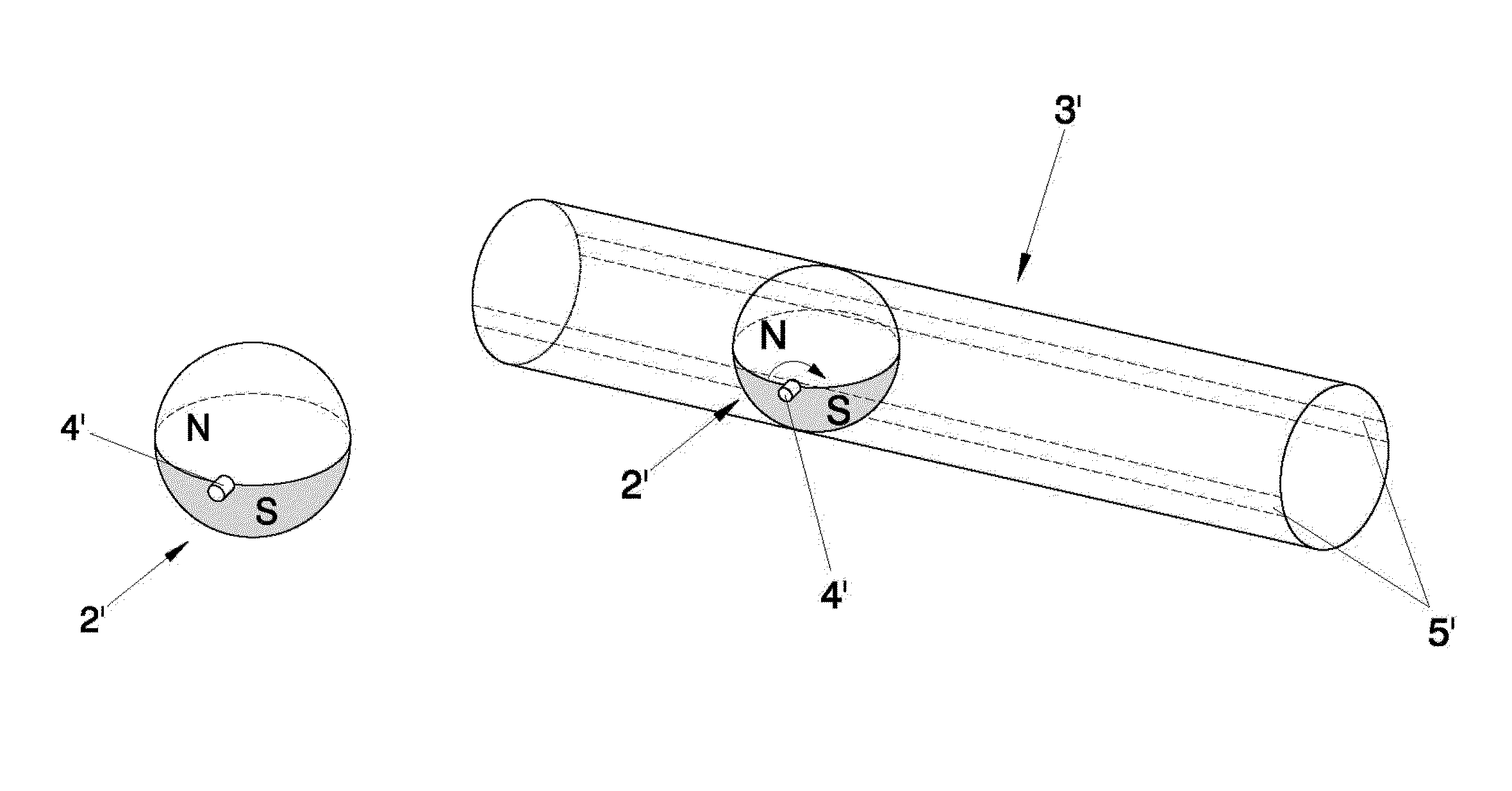Magnetic flux power generation based on oscilating movement
a technology of magnetic flux and power generation, applied in the direction of dynamo-electric components, dynamo-electric machines, electrical apparatus, etc., can solve the problems of reducing dimensions, reducing the support stability of pivoting points, and requiring recharge, so as to prevent lateral rotation, improve the stability of pivoting points, and minimize energy
- Summary
- Abstract
- Description
- Claims
- Application Information
AI Technical Summary
Benefits of technology
Problems solved by technology
Method used
Image
Examples
first embodiment
[0029]The first embodiment is represented on FIGS. 2a, 2b and 2c. FIG. 2a shows a cylindrical magnet (2), which in this example comprises only a couple of poles (N, S), and which may rotate around pivoting points (4) which coincide with the ends of the axis of revolution of the cylindrical magnet (2). FIG. 2b, on the other hand, represents the corresponding tube with a parallelepiped section (3), being able to appreciate the rails (5) placed in lines longitudinal to the center of opposing sides, as well as the exterior transversal winding (6). The magnet's (2) contour should be adjusted as much as possible within the tube of parallelepiped section (3), since that way the flow variation induced during its rotation will be maximized, although always avoiding the creation of friction that could slow that rotation movement.
second embodiment
[0030]FIG. 2c shows the device (1) already assembled and in operation during the boat's oscillation. It shows how the parallelepiped shape tube (3) has tilted to the right, and the cylindrical magnet (2) rotates in its interior with the pivoting points (4) supported over the rails (5). Due to clarity of the drawing, the winding (6) has not been represented in this figure. It shows how the rotation of the cylindrical magnet (2) causes the alternative passage of the north (N) and south (S) poles in front of each turn of the winding (6), generating an electromotive force induced at the ends of the winding (6). Described below is the device (1′) of the second embodiment, making reference to FIGS. 3a, 3b, and 3c, where FIGS. 3a and 3b show respectively the spherical magnet (2′) and the tube with a circular section (3′). In this case, the poles (N, S) have a hemispherical shape, with pivoting points (4′) being placed at the ends of an imaginary axis of revolution passing through the cente...
PUM
 Login to View More
Login to View More Abstract
Description
Claims
Application Information
 Login to View More
Login to View More - R&D
- Intellectual Property
- Life Sciences
- Materials
- Tech Scout
- Unparalleled Data Quality
- Higher Quality Content
- 60% Fewer Hallucinations
Browse by: Latest US Patents, China's latest patents, Technical Efficacy Thesaurus, Application Domain, Technology Topic, Popular Technical Reports.
© 2025 PatSnap. All rights reserved.Legal|Privacy policy|Modern Slavery Act Transparency Statement|Sitemap|About US| Contact US: help@patsnap.com



